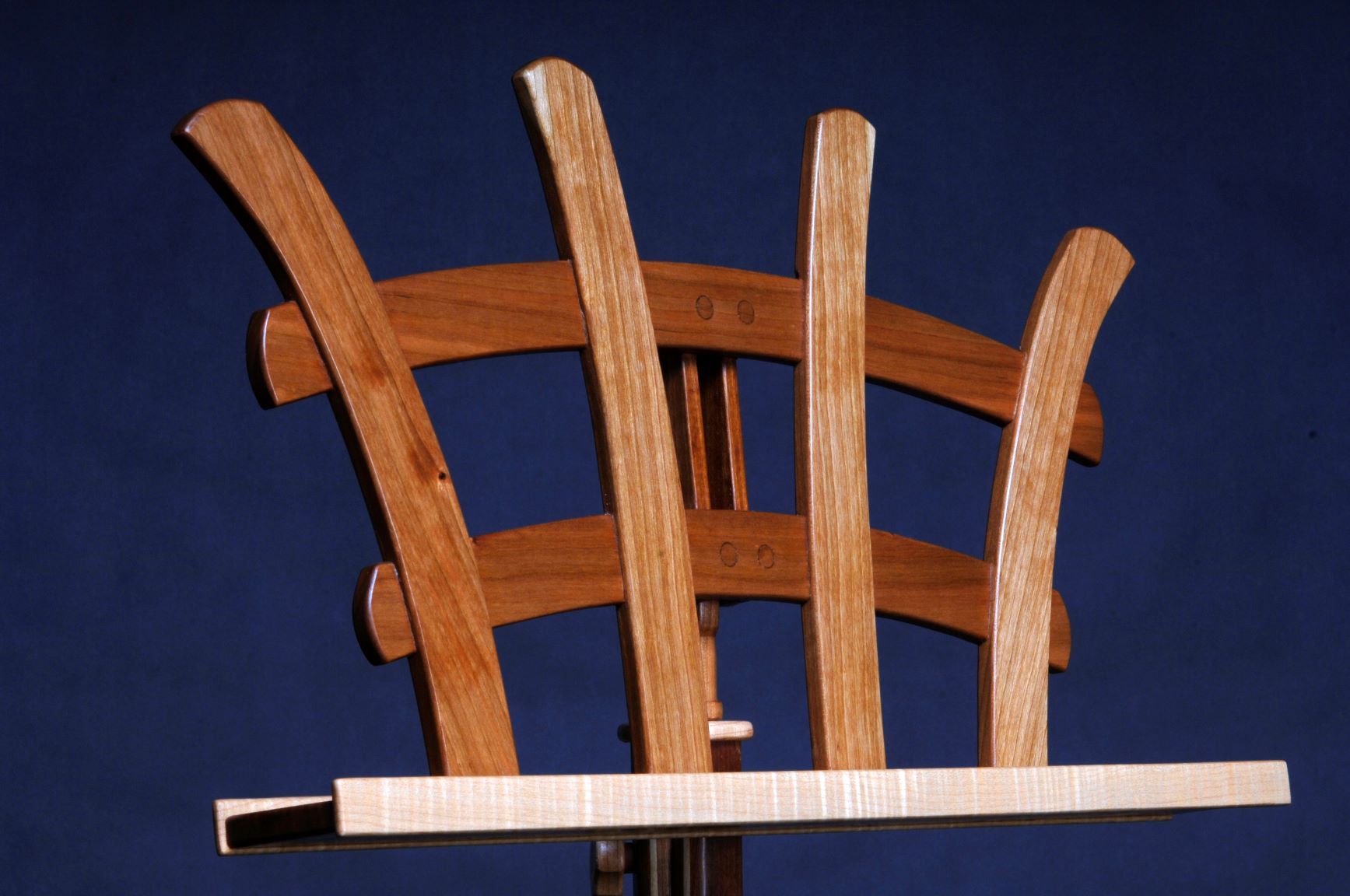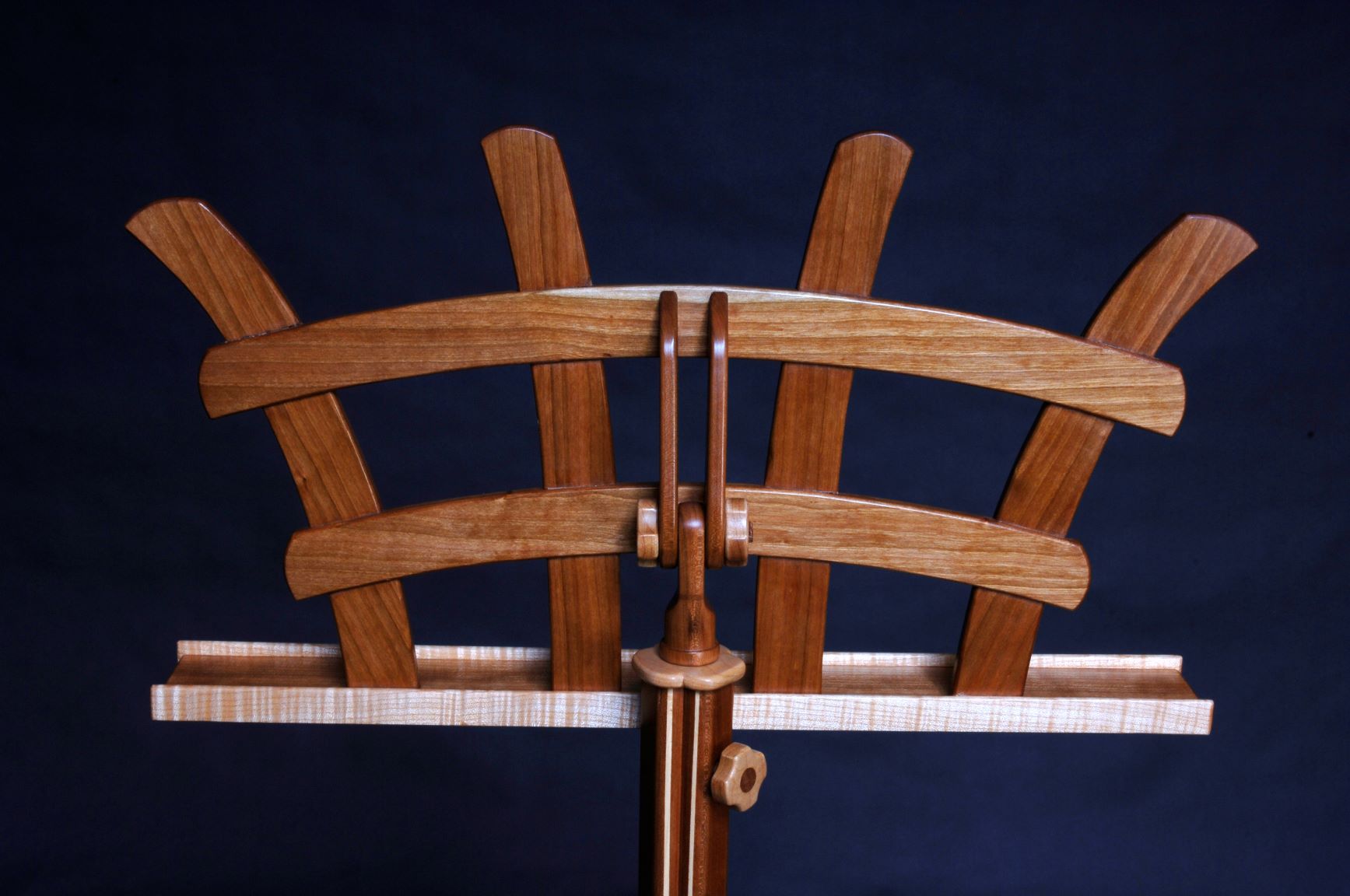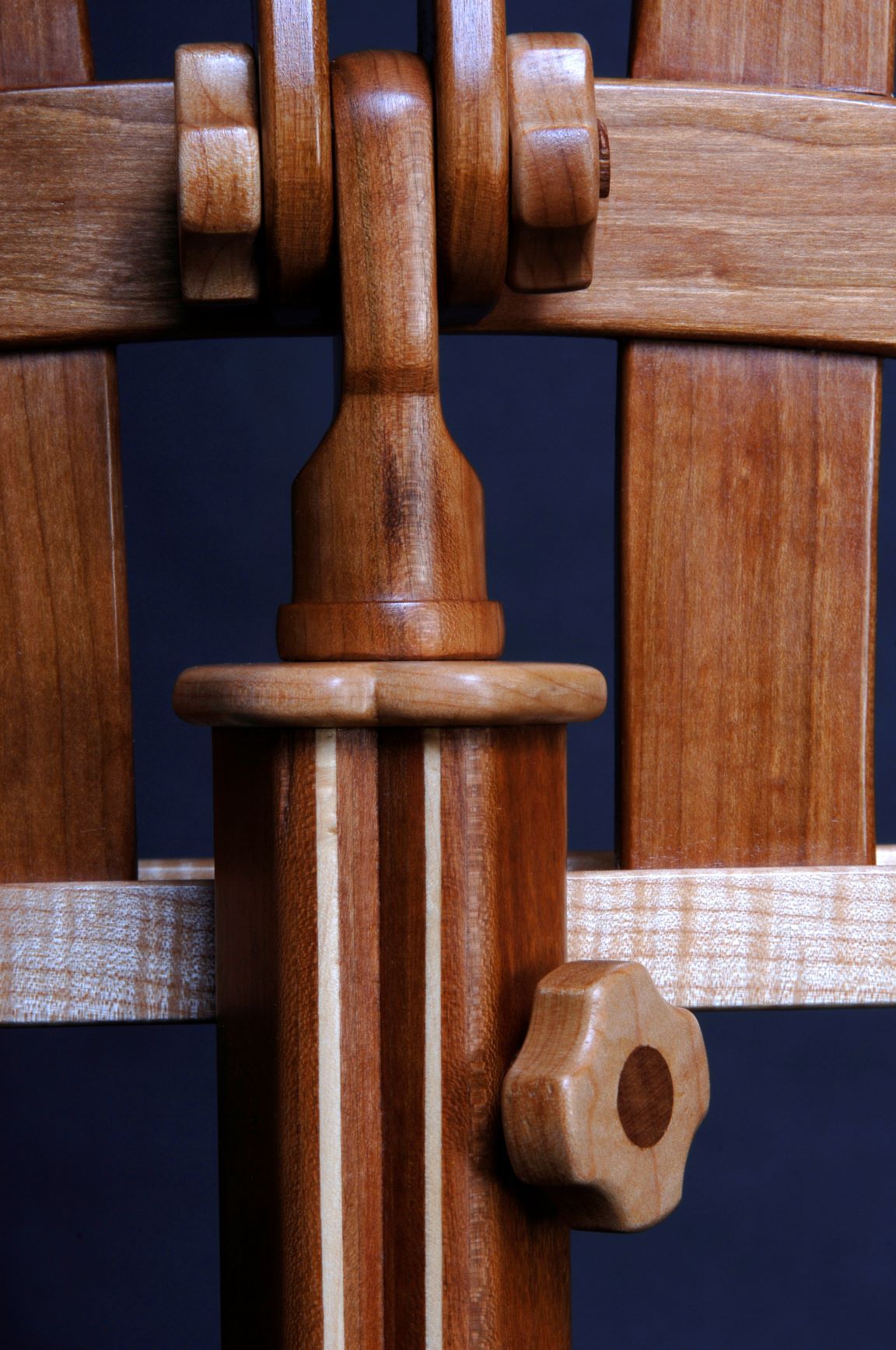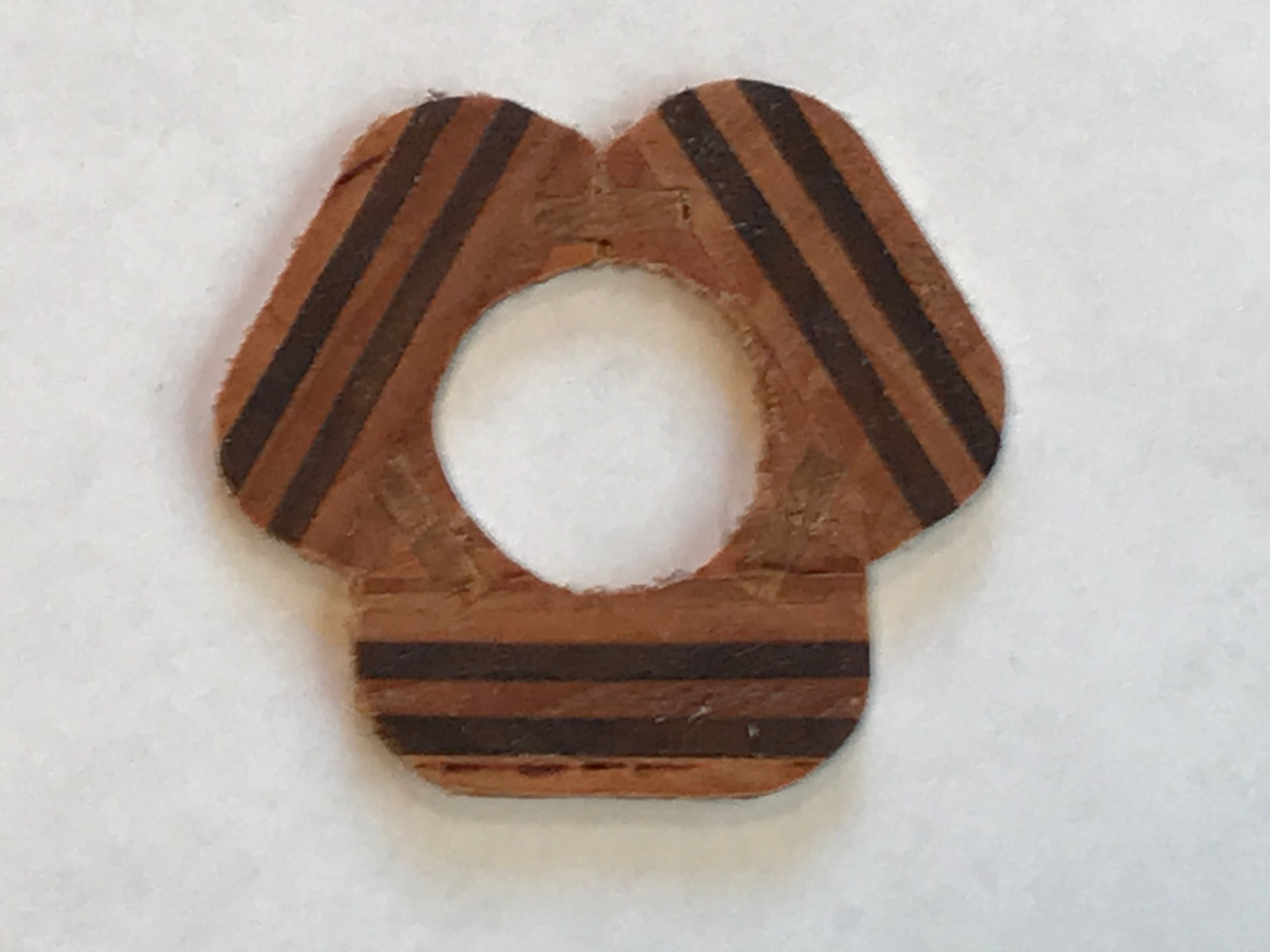Elegant and light contemporary music stand

As a lifelong hobbyist at woodworking and music, it was long a hope of mine to make a wooden music stand to unite my two passions. But wooden ones I saw were either heavy and ponderous, baroquely ornamented, or contemporary in sculptural but nontraditional forms that seemed distracting, rather than in line with my preference for simple and functional woodworking styles. Music stands present a challenge in having a “bench” (the part that holds the music) which must move up and down as well as change its angle to accommodate different player positions and sizes. A second challenge for my vision was to make a base that was strong but streamlined and light. Then I thought of the amazing strength of the wooden tennis rackets I used in my childhood, and of the ornamental possibilities of including contrasting layers. After a home remodeling project left me with cutoffs of vertical grain fir and walnut, my stand was born. I’ve since made versions in other woods, including the displayed cherry and maple
The base is formed by 3 bent-laminated legs joined in a central support by splines, enclosing a 3/4″ diameter void in the center to hold a 3/4″ dowel that serves as the stem for the bench. The legs are laid up of layers about 3/32″ thick (1/16″ works better for fir, which is more brittle than most hardwoods) , using urea-formaldehyde glue to prevent creep and allow adequate working time. 60 degree bevels on inner edges of the legs and 3/32″ grooves for the spline provide the joinery. Each leg is then hollowed before assembly with a 3/4″ core box bit to create 1/3 of the 3/4″ diameter central void. An old bicycle tire, cut into a single length and stretched by a helper, is wound around the base pieces to provide clamping pressure for the glue-up. The resulting base is amazingly strong!
The biggest challenge in completing the bench or “lyre” of the stand is cutting the 8 curved half-lap joints between the horizontal and vertical components, which must line up precisely. I created a jig which holds the parts and allows me to waste most of the wood with a router, followed by handwork to dial in the fit. Wooden screws and knobs complete the project and add an extra visual element of wood.
My first versions of this stand were of vertical grain fir and walnut cutoffs left over from a remodeling project. Even constructed with fir, those stands, donated for an auction to benefit a chamber music program I participate in, have proved amazingly strong and durable over the subsequent 20 years, per reports of those who got them. But I’ve loved other combinations as well, such as the cherry one here with maple accent strips in the lamination and figured maple for the trim. A completed stand weights 4 to 4 1/4 lbs.






















Log in or create an account to post a comment.
Sign up Log in